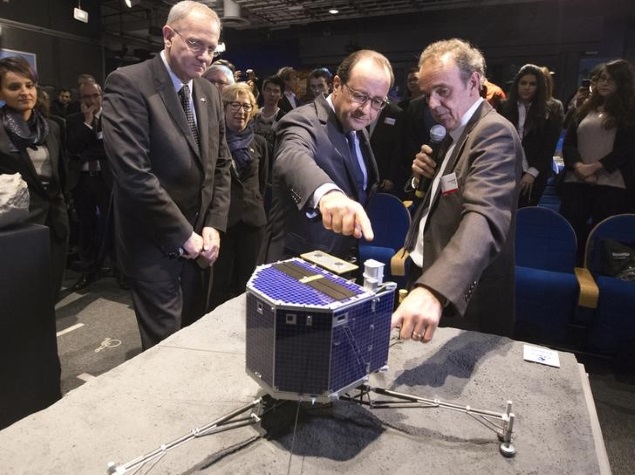ESA's Comet Landing the Top Breakthrough of 2014, Says Journal Science

The landing of a rover on a comet by European Space Agency's Rosetta spacecraft tops the list of 10 breakthroughs of 2014, the prestigious journal Science announced in its December issue.
Rosetta and its lander module, known as Philae, made major headlines in November when Philae touched down on the surface of the speeding comet.
The landing was rougher than expected as Philae bounced off the unforgiving surface of the comet, known as 67P/Churyumov-Gerasimenko, and came to rest on its side, quite a distance from its target.
"Philae's landing was an amazing feat and got the world's attention," said Tim Appenzeller, news editor of the journal Science.
"But the whole Rosetta mission is the breakthrough. It is giving scientists a ringside seat as a comet warms up, breathes, and evolves," he added.
This annual list of ground-breaking scientific achievements also includes ground-breaking advances in medicine, robotics, synthetic biology and paleontology, to name a few.
"Breakthroughs should do one of two things: Either solve a problem that people have been wrestling with for a long time or open the door to a lot of new research," added Robert Coontz, deputy news editor at Science.
Here is the journal's list of nine other major scientific achievements of 2014, in no particular order
The Dinosaur-Bird Transition: A series of papers that compared the fossils of early birds and dinosaurs to modern birds revealed how certain dinosaur lineages developed small, lightweight body plans, allowing them to evolve into many types of birds about 66 million years ago.
Young Blood Fixes Old: Researchers demonstrated that blood from a young mouse can rejuvenate the muscles and brains of older mice.
Getting Robots to Cooperate: New software and interactive robots that prove that robots can work together without any human supervision after all.
Neuromorphic Chips: Computer engineers at IBM and elsewhere rolled out the first large-scale "neuromorphic" chips this year designed to process information in ways that are more akin to living brains.
Beta Cells: Two groups pioneered two different methods for growing cells that closely resemble beta cells the insulin-producing cells of the pancreas in the laboratory this year.
Indonesian Cave Art: Researchers realized that hand stencils and animal paintings in a cave in Indonesia, once thought to be 10,000 years old, were actually between 35,000 and 40,000 years old.
Manipulating Memory: Using optogenetics, researchers showed that they could manipulate specific memories in mice.
CubeSats: Although they have been blasted into space for more than a decade now, cheap satellites with sides that are just 10 cm squared called CubeSats really took off in 2014.
Expanding the Genetic Alphabet: Researchers have engineered E. coli that harbours two additional nucleotides that make up the standard building blocks of DNA.
Post Your Comments for this News
Science Articles
-
How To Boost Student's Interest In Science
2017-04-07 11:57:27
-
Know about the Father of Standard Time
2017-01-07 12:34:58
-
10 Ways In Which Exercise Benefits Your Brain
2016-08-16 11:40:57
-
China's Development
2015-09-08 15:17:15
-
20 lice found on minor's eye lashes in China
2015-09-08 15:14:53